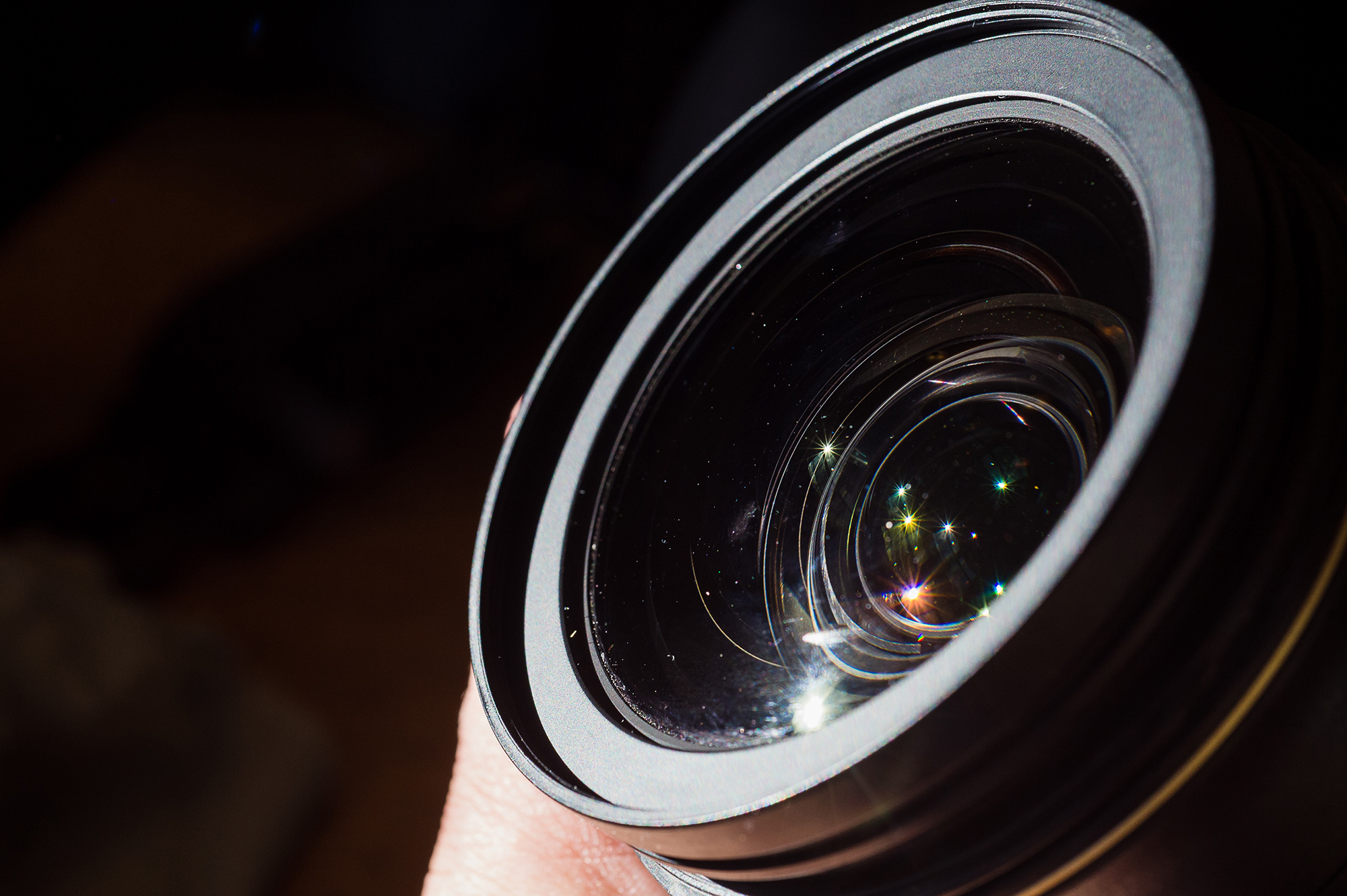
NOTICE: Certain links on this post may earn a commission for Western Hunter Magazine from Amazon or our other affiliate partners when you make a purchase. Thank you for your support.
Tips for Backcountry Camera Lens Care
It really doesn’t matter how good your camera is if you don’t take proper precautions for camera lens care. A clean, clear lens is paramount to letting your images reach their potential.
I’ve cringed more than once watching photographers carry their expensive telephoto lenses over their shoulder with the lens element facing the sky while walking through the woods. My worry is always that rain, snow, sap, or heaven forbid, bird droppings falling out of the sky could land on the element of the lens. For that reason, I always carry my lenses pointed any direction but up. This beats constantly being worried about camera lens care.
My first rule is to not clean a lens unless it’s necessary. There will be times when your gear will get dirty - it can’t be helped - but excessive cleaning will do more harm than good. A few dust specks here and there, even inside the lens, won’t do harm to your image.
I can probably count the number of times I’ve cleaned any of my lenses over the years. I’ll bet in five years, I’ve cleaned my 500mm f4 lens fewer than ten times. I haven’t had to clean it because I don’t allow the lens element to get dirty. On the occasions I have had to clean it, it was due to water or snow. Most of the time, cleaning a lens means blowing the dust off, not rubbing it with a cloth.
No matter what lens you use, or what camera you’re using, simply proper camera lens care, (especially the optics) will help keep it clean. The fewer times you actually have to touch the glass, the fewer chances there are to leave any lasting marks. As for the barrel of the lens, I gently brush it off or use a cotton rag to dry it off if it’s wet.
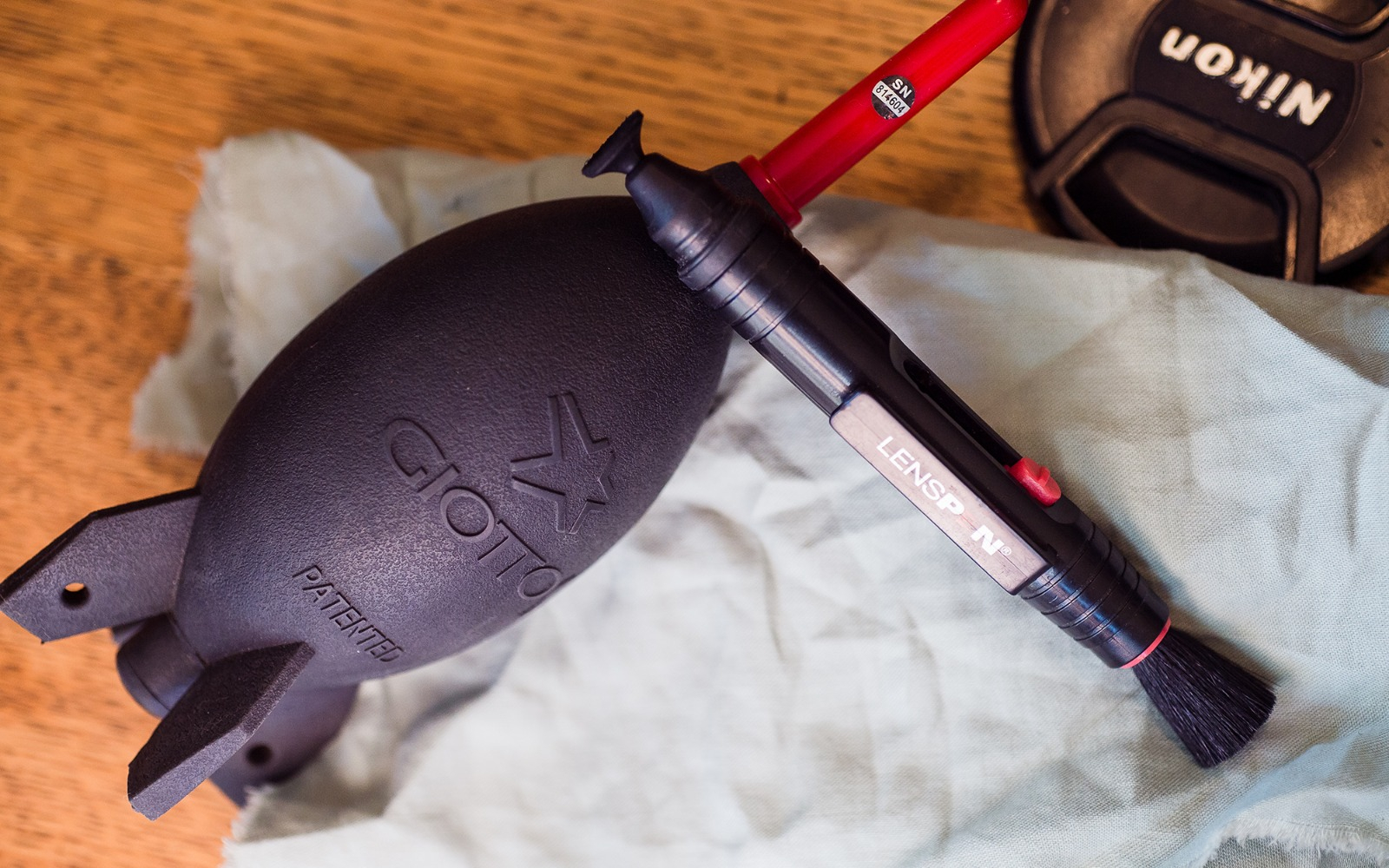
My Basic Process
First, blow dust off the lens with “rocket style blower”. It’s always best to try to remove particles this way rather than doing anything to wipe/grind them into the glass. Next, I’ll use a light lens brush to gently whisk away any more stubborn material. Finally, if there are any remaining smudges, etc., I’ll breathe on the glass and then use a clean cotton t-shirt or rag, very gently wiping from the center outward to remove fingerprints, etc.
I’m okay with a little dust on the outside of the glass. It’s rare that will ever show up in your photographs.
Excessive pressure on the glass could damage it, but more importantly, it will likely damage the coatings on the glass. The coatings are critical to the performance of any optic. So, gently removing the dust with a blower and a small lens brush, I also inspect the glass for any lasting marks.
Beware of Water Spots
I also check for moisture damage. Rain and snow will damage the coatings if left to evaporate. The minerals found in rain and snow will be left behind when the droplets evaporate, potentially leaving behind permanent marks or water spots.
I never let water droplets evaporate. Instead, I immediately clean the glass with a soft, 100% cotton cloth – a soft t-shirt or a high-quality cotton sheet with no lint works best.
If I find a dried water spot, I remove it as soon as I see it. I’ll use a lens pen or a small cotton cloth stretched over my finger. I’ll gently remove that single spot with the tip of my finger covered by a cotton cloth. Add a little moisture from your breath, then gently massage the water spot in a circular direction until it’s gone. There is no need to scrub the entire front element to remove one or two spots.
Fog
I don't put any kind of anti-fogging agents on my lenses. When fog appears on any glass, I allow it to evaporate before I try to remove it with a cloth. Sometimes, depending on the conditions, you’ll have to wipe it off, but I recommend planning enough time to allow the fog to evaporate instead of wiping it with a cloth. Wiping it will cause streaks and once you’re down the path of wiping streaks you have to stay with it until they’re gone.
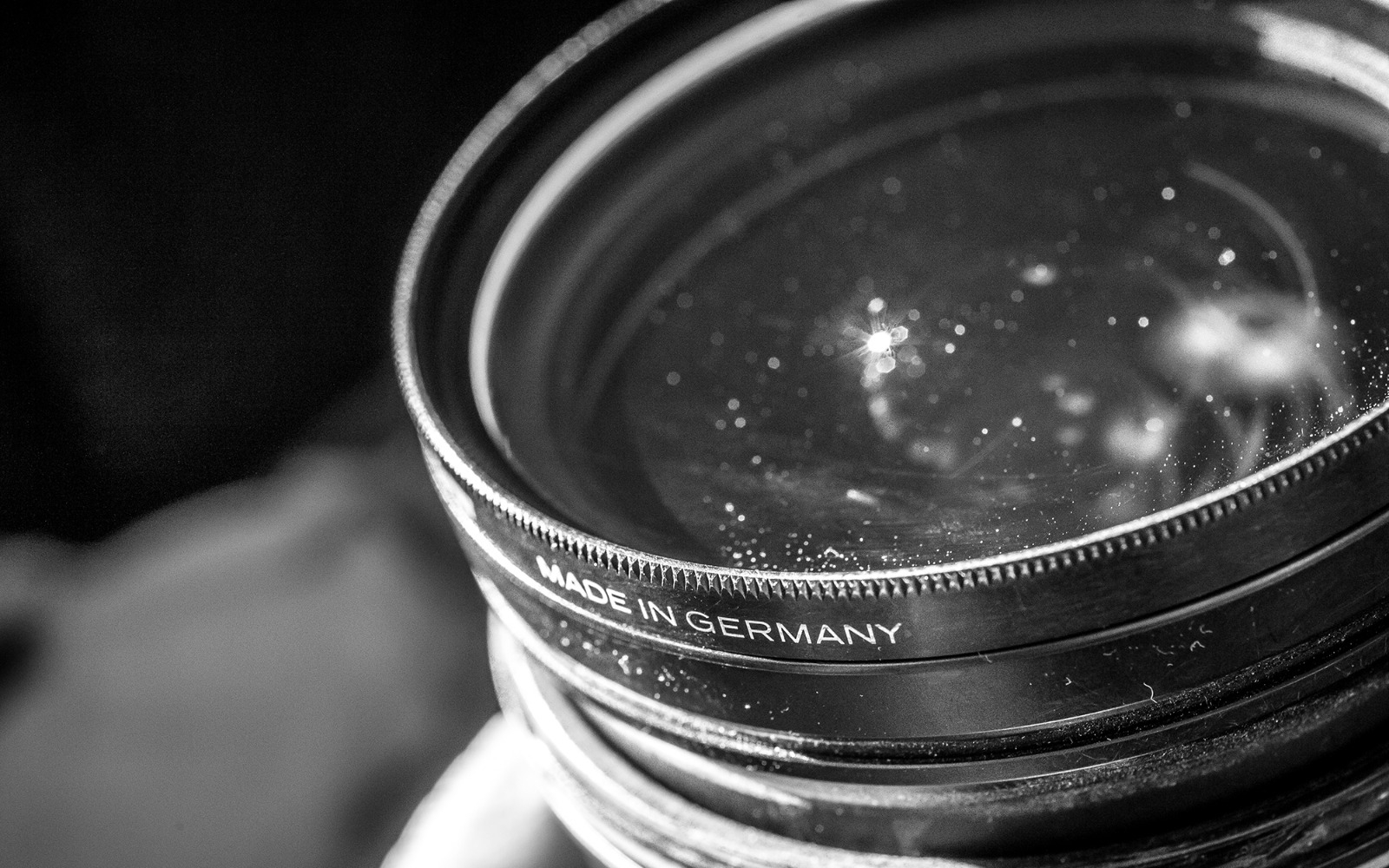
A 24-70mm f2.8 lens with a high-quality glass B&W filter. I use filters on all of my normal to medium focal length lenses. Notice the dust. Most of this dust can be removed with the blower. Water droplets require a more aggressive approach.
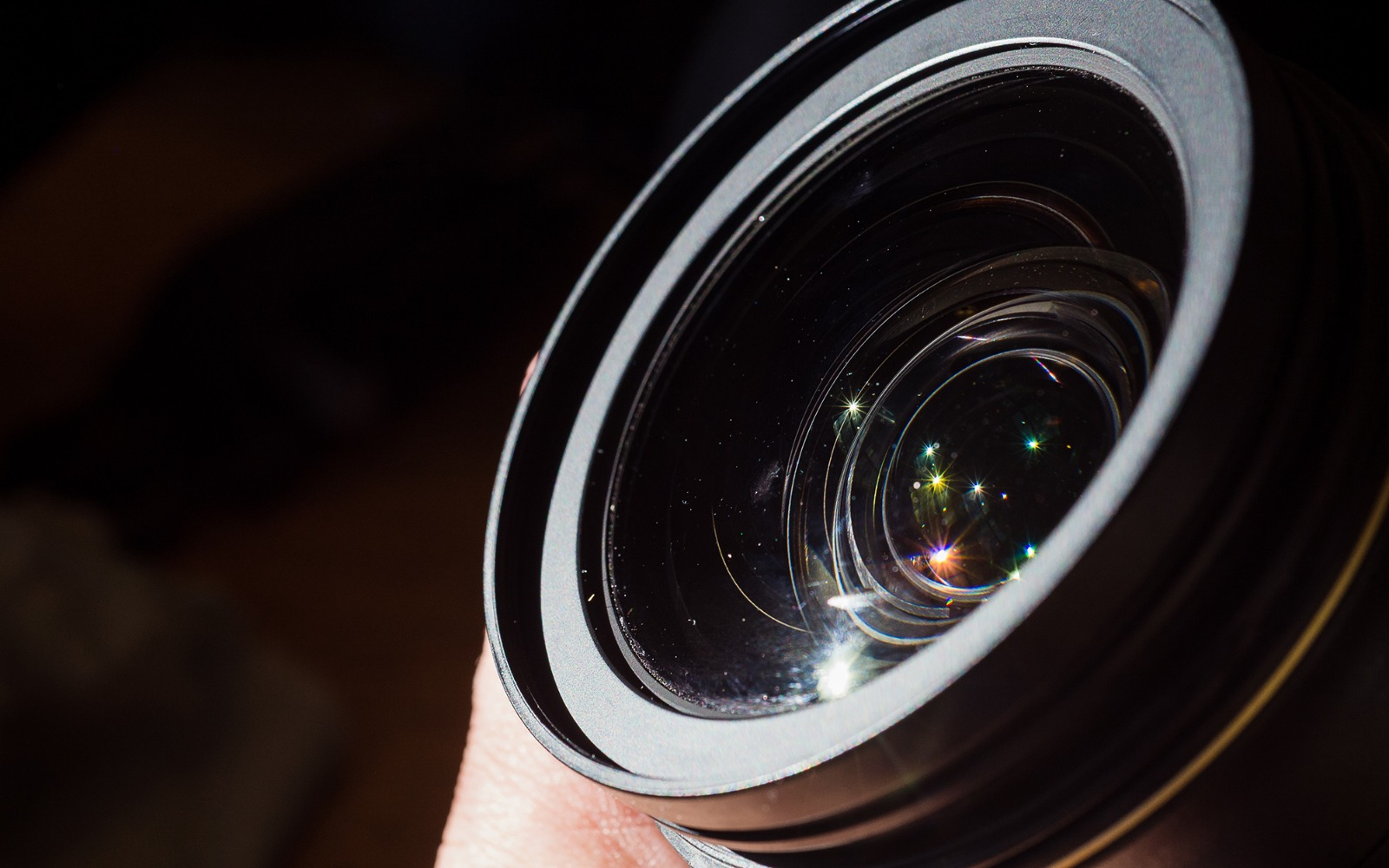
A 24-70mm f2.8 lens without the filter. Notice some light dust. At this point, I’ll put the filter back on the lens. I try to remove as much dust and lint as I can before I put the filter back on. I don't worry about a few specks or some smudges near the very edge of the glass. There’s no need to make them spotless. Less contact is better. Feel free to use lens wipes or lens cleaning solutions if you like but be gentle.
Screw-On “Filters”
I do use screw-on lens “filters” on all of my lenses from 200mm down to 15mm. I buy the best I can afford and leave them on unless I’m shooting into the light source; then I may remove the filter to reduce unpleasant glare. The nice thing about using a lens filter is that I can wipe it off as many times as I want, and even replace it if/when it gets damaged. A front element on a 17-35mm f 2.8 lens will run you $500!
Lens Coats
I don't recommend lens coats (neoprene “socks” that cover lenses), but they are popular. If you like them, go ahead. I just have never see the need and would prefer to spend my money on gas or travel to places where I can take photos. I’ve never used a lens coat and my lenses still look and function great.
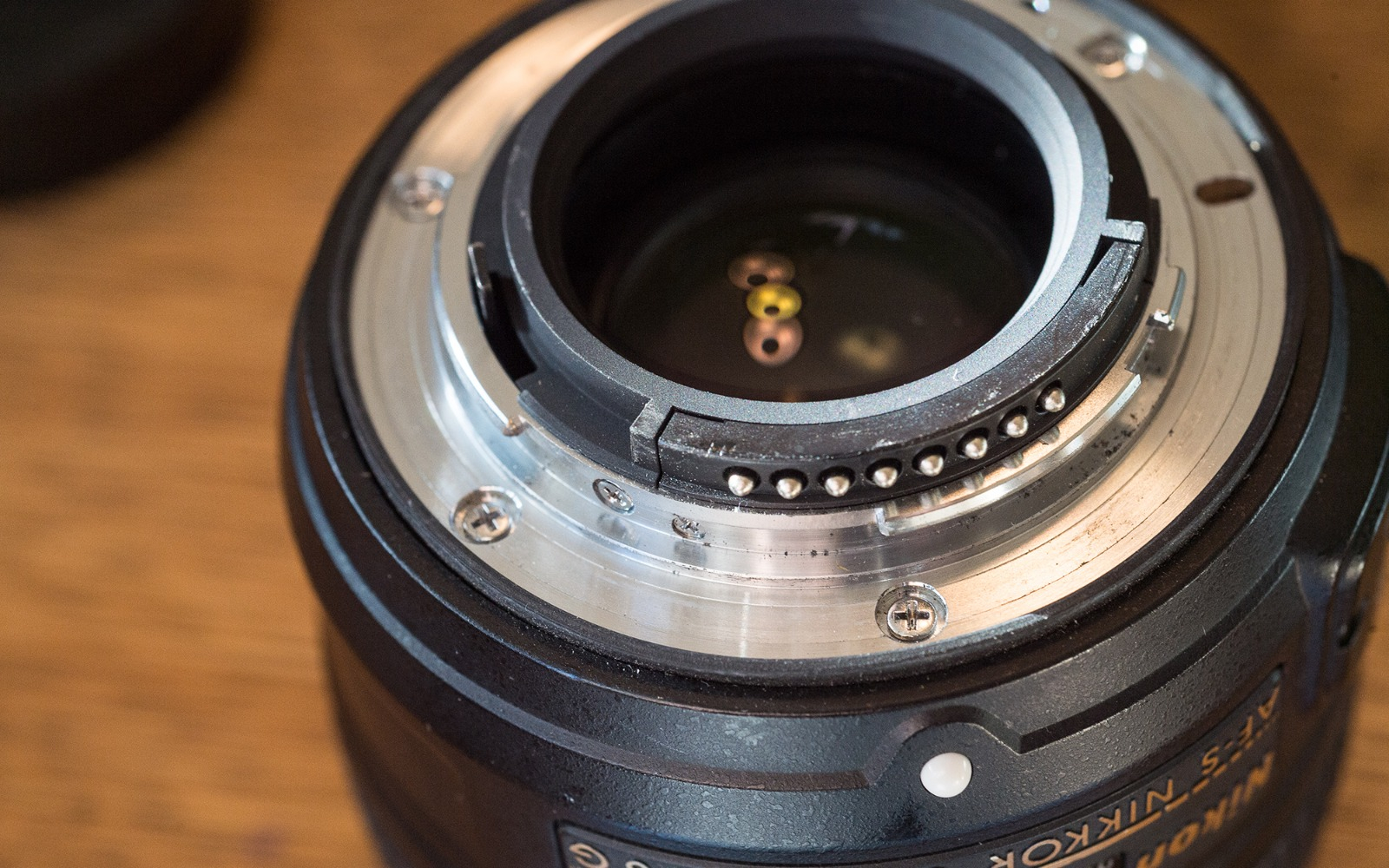
The back of a 50mm f1.8 lens. I clean the back element when needed. Also, notice the small Phillips screws. I check them a couple times a year. I find that they get loose from time to time. Keeping them tight is critical to optimum performance.
Rear Element
Sometimes the rear element can get dirty. Most times I’ve seen it get dirty from fingerprints. I treat the rear element just as I do the front. Keep it clean, but if it needs attention, be gentle, use a brush or air to remove dust, and a light, clean cotton cloth to remove smudges or a fingerprint.
Professional Cleaning
If you don't want to do the cleaning yourself or you feel that it may need a more experienced hand to remove something more substantial, and you live near a good camera store, stop in and say hi. I’m sure they’d love to earn your business by helping you keep your lenses clean!
DSLR Camera Lens Care
On the back of every DSLR lens, there are tiny Phillips head screws. I occasionally check them for tightness. You’ll find they will work loose over time. Same with the lens mount. It’s a good time check those screws anytime you clean your lens.




